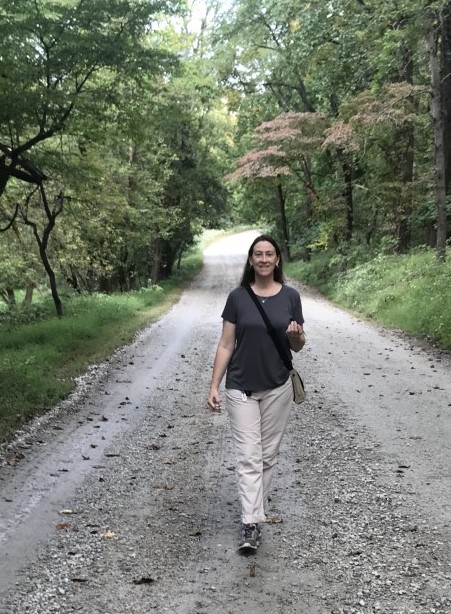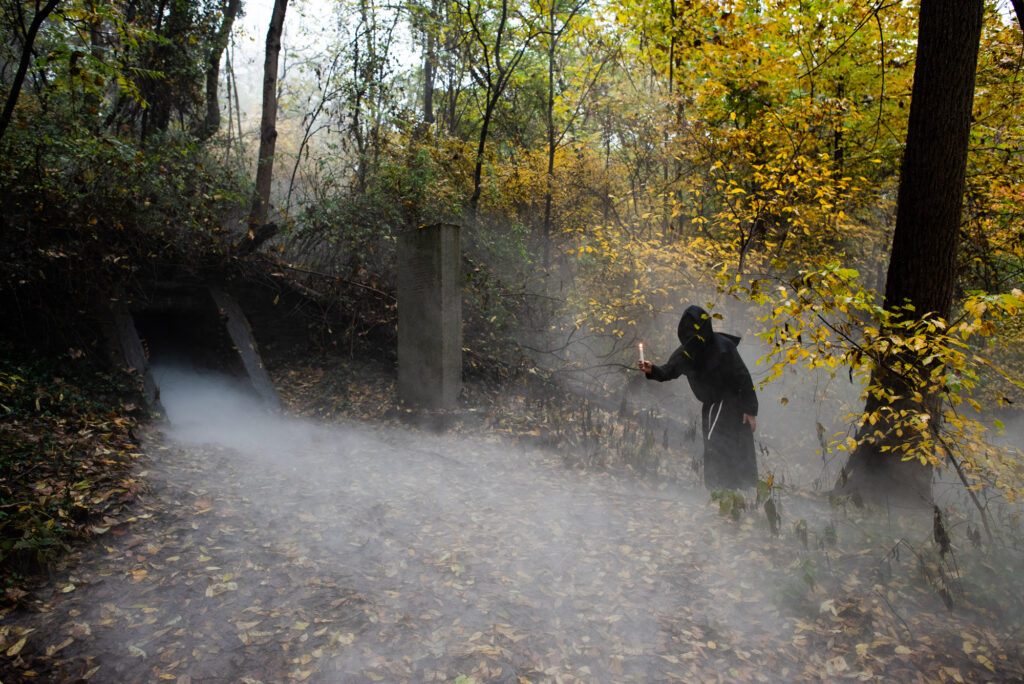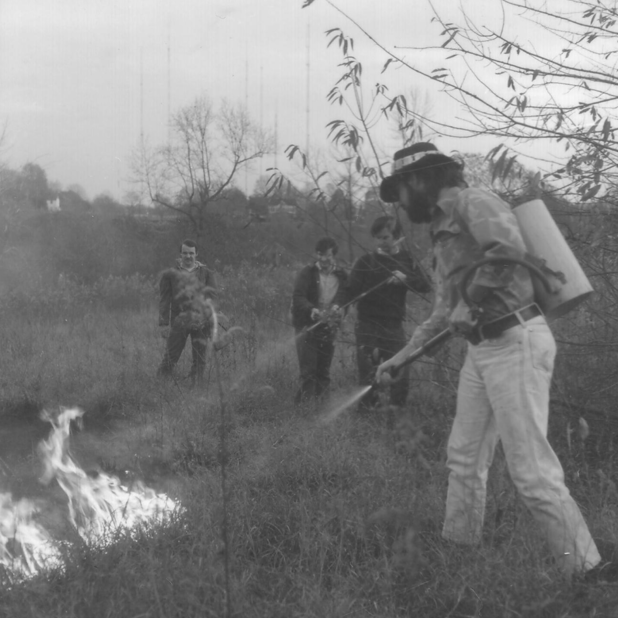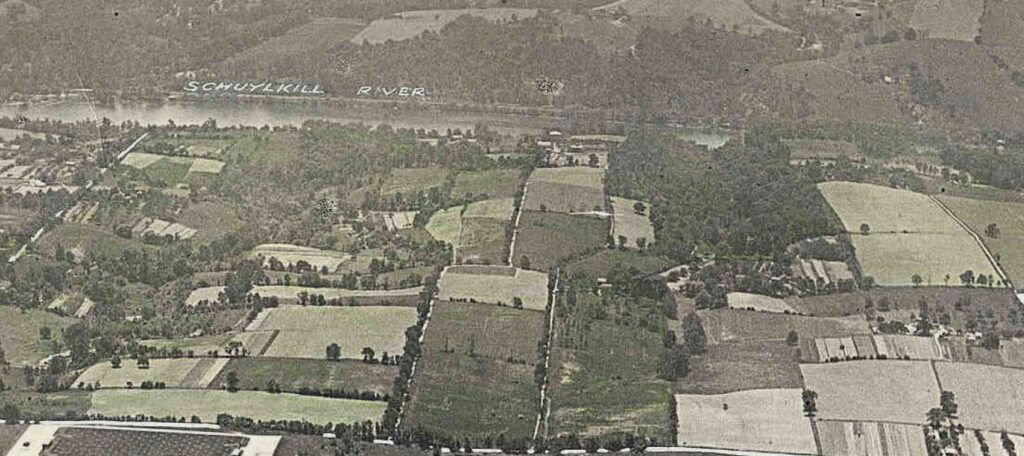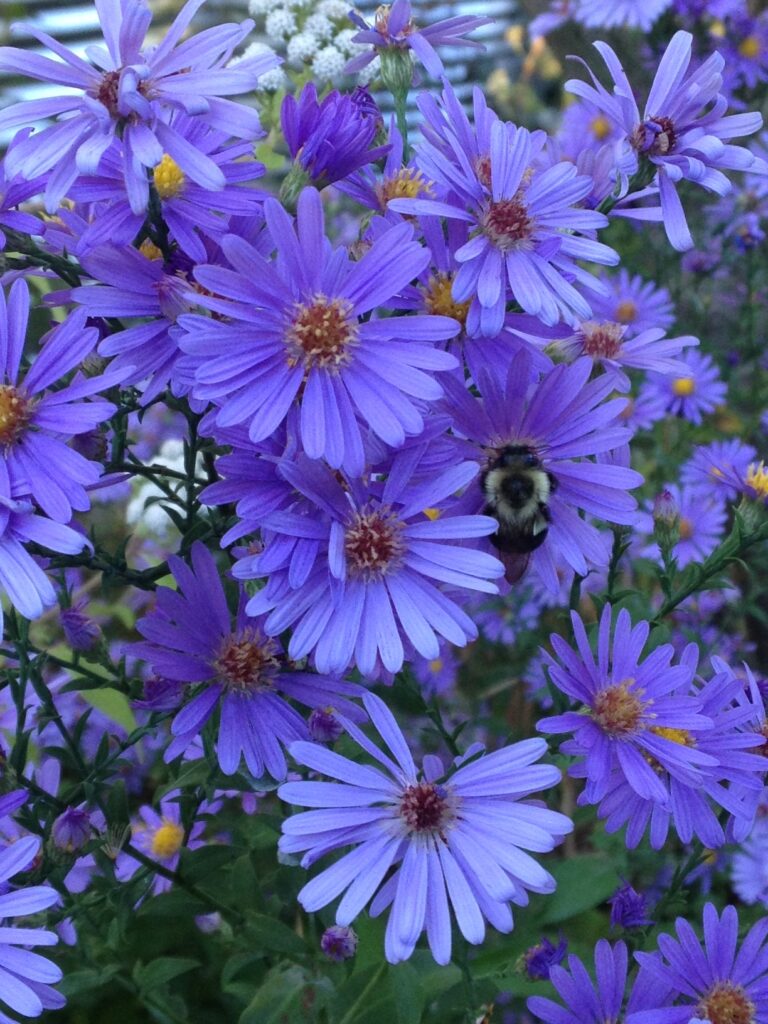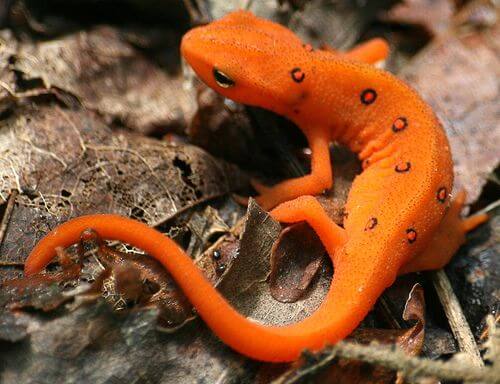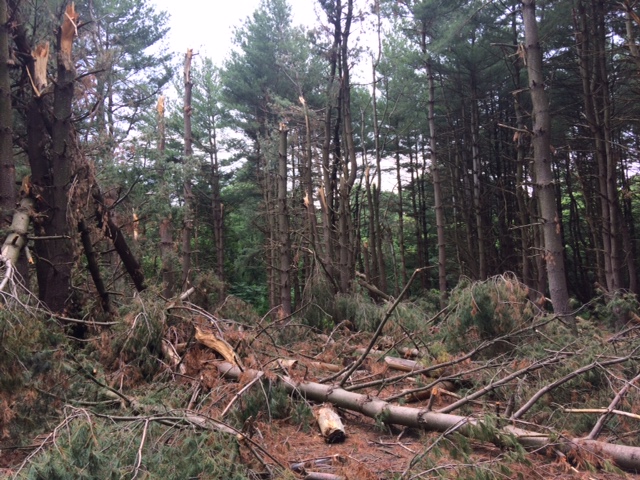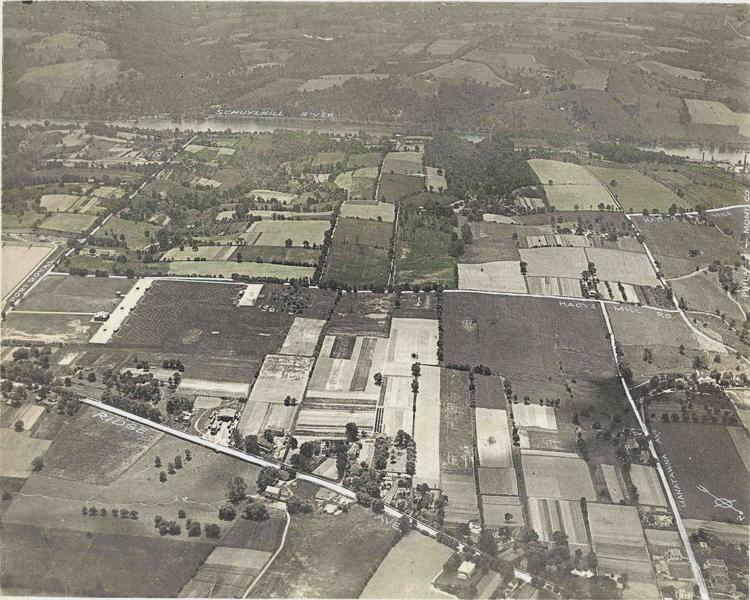If you’ve visited the Schuylkill Center anytime in the last 20 years, there’s a great chance you’ve met Roxborough’s Bea Kelly, who this week celebrates her 20th anniversary as a member of the center’s staff. Our program registrar, Bea served as our receptionist for 15 of those 20 years,so if you’ve walked in the front door to come to an event, see our art gallery, drop off a preschooler, or buy our special bird seed, you’ve likely said hello to Bea.
To mark the occasion, the staff created a bee-friendly garden (pun intended, get it?) at the front door near our new seating area, which overflows with plants that birds and pollinators like native bees find attractive, like viburnums, small flowering shrubs with fruits craved by birds, and fall-blooming asters that nourish migrating monarchs on their way south. She also was given a gift certificate to White Yak, the delicious Tibetan restaurant that’s scoring a lot of attention on the Ridge.
A native Philadelphian who grew up in Northwest Philly, Bea has called Roxborough her home for the last five years. Asked why she chose Roxborough, she responded, “well it’s obvious that being in close proximity to work is a bonus. The neighborhood is beautiful, vibrant, verdant, and conducive to sustainable living and healthy community. And it’s fun.
“My neighborhood,” she continued, “ is one of the most priceless areas of the region. I can walk just about anywhere from my house and find interesting nooks and crannies along the way. I love the views and the architecture and the history around every corner, and also the gardens. I enjoy the ease and comfort in exploring the area and I meet so many friendly neighbors everywhere I go.”
Bea came to the Center in 2000 as a part-time educator but quickly transitioned to become the “face” of the organization when she took on the job of front-desk receptionist. Bea recalls, “it was always satisfying to help anyone who came through our front door because everyone is usually surprised and delighted at what they find when they explore our trails.”
She’s also seen a lot of nature in her time with us, as the front desk is surrounded by glass windows. She’s the first to see new birds at our feeding station, often writing their names of an old-school chalkboard in the lobby, or deer coming too close to the front door, or Canada geese returning to nest on Fire Pond outside the front door, or blue jays stealing name tags from the native plants we sell at the front door (they love doing this, oddly), or fox droppings deposited on the front walkway by a fox likely snubbing his nose at us, and more.
She’s even our rainfall monitor, measuring how much rainfall comes each day in the rain gauge out by the solar collectors. And she’s been one of the go-to photographers I’ve leaned on for submitting alongside this column– you’ve seen her work on several occasions.
When asked about colleagues or mentors that influenced her, Bea gave a shout out to our diverse army of volunteers. “I think there’s something miraculous when people give freely of their time.” While the individual tasks may not seem significant, Bea notes, “their collective benefits are immeasurable. Their work over the years has made the Center run much more smoothly.” When asked about working with Bea, Director of Education Aaliyah Green Ross comments, “I’ve relied on Bea in my time here. She is always a great resource when it comes to what works when we’re planning education and public programs.”
When Bea isn’t at her desk, you might find her walking along one of her favorite places at the Center, our driveway. “There’s a place at the bend in our driveway that’s really quiet and there are trees on either side,” she muses. “When I walk along the driveway, it feels like I’m on an old country road. The bend is a spot that has a nice mix of ‘wildness’ with a dab of civilization.”
During her time, Bea has worked for three of our four executive directors, and just missed meeting our founder, Dick James, who retired in 1996. As the fourth in that chain, I think that it’s incredibly rare that people stay at one workplace for 20 years anymore, so the center is very lucky that Bea has been that warm, welcoming presence at our front door for all this time. In fact, Dick James, here for 31 years, may be the only other person in our organization’s history to hit this mark.
I’m hoping she stays on another 20 more! We’ll write about her in this corner of the newspaper again when she does.
Congratulations, Bea, and thank you.
By Mike Weilbacher, Executive Director

